Australia braces for ‘catastrophic’ bird flu strain after mass wildlife deaths overseas
Australia is the only continent yet to be hit by an unpredictable and devastating bird flu strain never seen before – and it’s not just killing birds.

National
Don't miss out on the headlines from National. Followed categories will be added to My News.
Australia’s iconic wildlife is facing a potentially devastating threat.
A highly pathogenic avian influenza strain has emerged in the last few years and left a trail of destruction with mass outbreaks and mortalities worldwide – and not just in birds.
Australia is bracing for the unpredictable and deadly virus to potentially hit our shores because as Dr Simone Vitali explains to news.com.au, while it hasn’t happened yet, we cannot stop it from entering.
Dr Vitali, a senior program manager at Wildlife Health Australia, said they had never seen a strain as bad as HPAI H5 clade 2.3.4.4b before – in terms of the impact and range of species infected.
“The implications for biodiversity and tourism are significant,” she said.
Hundreds of species of wild birds have been impacted globally.
In South America, more than 650,000 seabirds have died including pelicans, boobies, cormorants and penguins.
“We know it can move very quickly,” Dr Vitali said. “It got from the top of South America to the bottom of South America, which is about 6000km, within six months, so that’s a very, very fast transmission.”
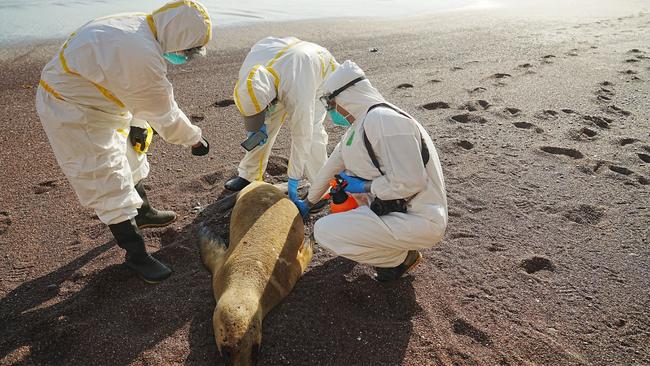
The disease is understood to mostly spread through migratory birds and spill over into marine mammals. Because so many species are affected there are “a lot of avenues for it to come in” to Australia.
Following outbreaks killing more than 30,000 sea lions in South America, researchers from UC Davis and the National Institute of Agricultural Technology in Argentina found some 17,000 elephant seals dead at a breeding colony in October last year at Punta Delgada, along the coast of Península Valdés.
Marcela Uhart, co-leading author of the study, said we should be alert, especially for marine mammals.
“The more it adapts to mammals the more important it becomes for humans,” she said.
The deadly strain hit mainland Antarctica for the first time earlier this year, and the virus has even killed a polar bear in northern Alaska.
“It’s a real challenge,” Dr Vitali said. “We have to assume here in Australia that our marine mammals would be susceptible, any of our carnivorous mammals would also be susceptible if they’re inclined to eat birds, and we are also assuming our seabirds, waterfowl and shorebirds are going to be hard hit.
“And also our raptors if they happen to predate on our infected birds, so eagles, falcons, hawks.”
She said dolphins and whales had also been infected but as they were in the ocean, it was harder to quantify the impacts.
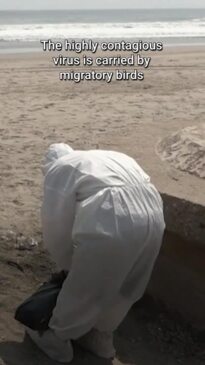
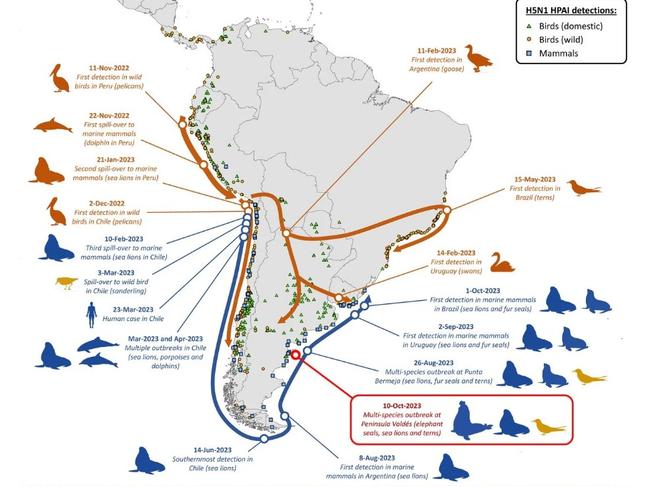
The Australian Department of Agriculture, Fisheries and Forestry confirmed Australia is the only continent that has not reported this avian influenza strain, also known as bird flu.
Tourism attractions at risk
Dr Vitali said there is “literally hundreds” of tourism attractions in Australia involving wildlife that could be at risk.
One of those is the iconic little penguins at Phillip Island.
“We know that penguins can be infected,” she said. “We haven’t seen it in little penguins simply because it hasn’t got to where little penguins are but we’d have to presume there is a risk of diseases and mortalities because of what we’re seeing in other penguin species.”
Penguins are also known to socialise closely and share nesting sites, which is likely to make the disease spread faster.
“The reality is we can’t stop this disease coming due to wild birds,” Dr Vitali said. “Our capacity to prevent little penguins being exposed to this virus if it does come to Australia is limited. There’s not a lot we can do.”
One possible route of entry for the disease is via migratory shorebirds returning to our northern shores in August and September, but there are also risks at other times of the year with different movements of wild birds.

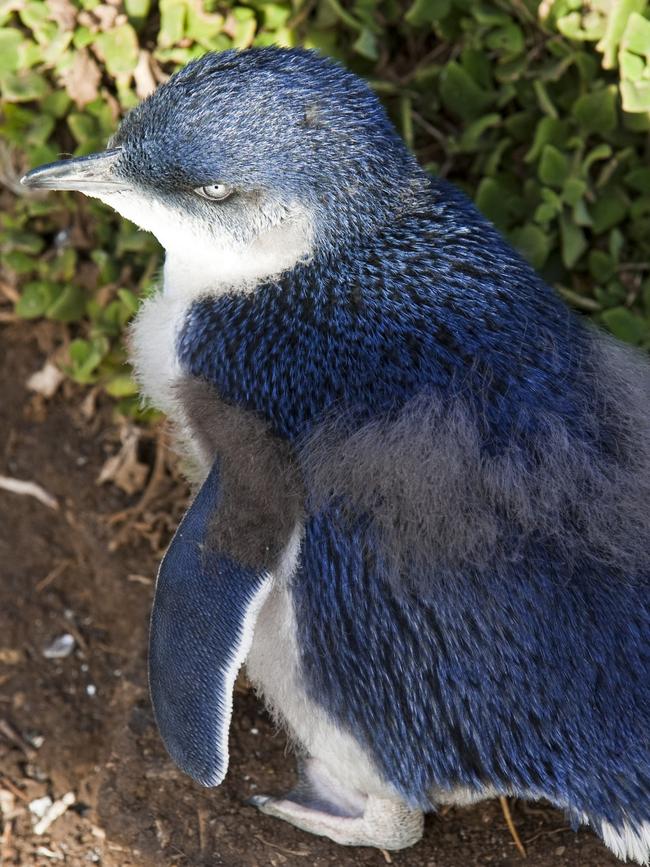
Wildlife Health Australia is encouraging wildlife managers across the country to plan an appropriate response for their specific situation while there is still time.
“The sorts of things you can do is think about, what will happen to public access to Phillip Island when this disease comes? What can we do to prevent further spread through our actions? How can we limit the amount of spread in Phillip Island once the disease comes here?” Dr Vitali said.
This strain of highly pathogenic avian influenza has also been detected in humans in rare cases so there needs to be considerations like restricting human-animal contact and PPE for wildlife workers if the disease is detected here.
Phillip Island Nature Parks has completed a disease risk analysis using Wildlife Health Australia’s risk mitigation toolbox.
CEO Catherine Basterfield told news.com.au in a statement: “Phillip Island Nature Parks is working closely with the Department of Energy, Environment and Climate Action and other relevant organisations to prepare in the event of an avian influenza detection in penguins on Phillip Island.”
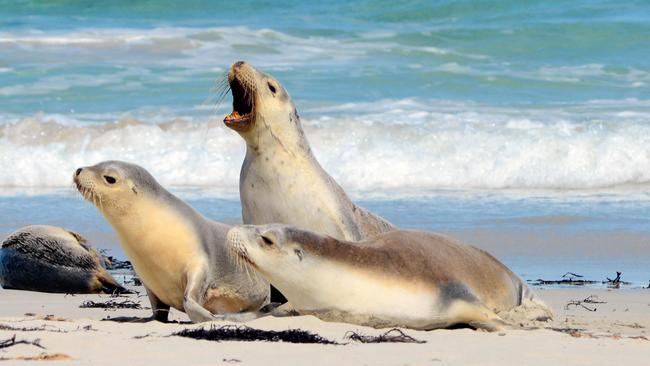
Fears for Australian marine mammals
Earlier this month, the Invasive Species Council, Australian Marine Conservation Society and Biodiversity Council called on governments in Australia to ramp up preparations.
“The rapid adaptation of this virus to mammals means the consequences for Australian wildlife could be even more catastrophic than predicted if H5N1 arrives in Australia,” Dr Carol Booth, Invasive Species Council principal policy analyst, said in a statement.
Referring to the researchers findings on mass marine mammal deaths in South America mentioned earlier in this article, she added: “If high pathogenicity bird flu turns up in Australia, the government-commissioned risk assessment [from 2023] predicts ‘catastrophic’ impacts on our native birds.
“That risk assessment predicted only minor impacts on marine mammals, but the latest research implies the risk to Australian mammals is now much higher.”
Alexia Wellbelove, an Australian Marine Conservation Society campaign manager, described the potential consequences for Australia’s marine mammals as “frightening”.
“Australia’s endemic sea lions are already endangered, with only about 12,000 remaining – far fewer than the 30,000 sea lions killed in South America,” she said.
“This killer disease has also been wiping out millions of birds around the world, including penguins in Antarctica. Our native birds will face a similar fate if the disease reaches Australia.”
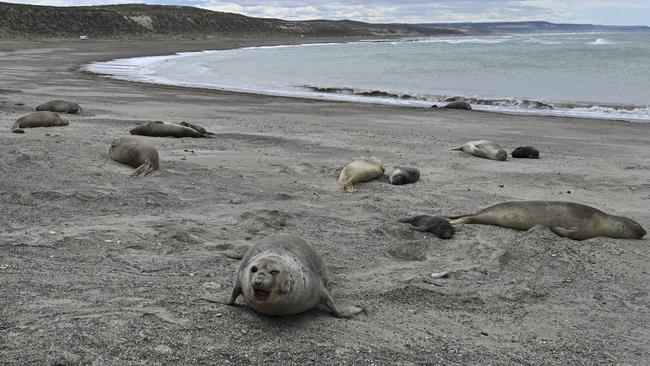
The Australian government response
An Agriculture Victoria spokeswoman said it was the Australian Government who was co-ordinating national activities to improve awareness and preparedness for outbreaks.
“The Victorian Government undertakes surveillance for avian influenza virus in wild birds, including H5N1, under the National Avian Influenza Wild Bird Surveillance Program which is co-ordinated by Wildlife Health Australia,” they said.
The federal Department of Agriculture, Fisheries and Forestry told news.com.au Australia has a nationally agreed response and cost-sharing arrangements in place to respond.
“In the event of an HPAI outbreak, state and territory governments carry out response activities within their borders and DAFF fulfils international reporting obligations and work with relevant trading partners and our overseas counsellor network to restore trade access to affected markets as soon as possible,” a spokesman said.
“In a large outbreak DAFF would provide national response co-ordination including co-ordinating requests for human resources or specialist expertise.”
He agreed there was “no way” to prevent this HPAI H5 strain entering Australia through migratory birds.
“However, Australia has effective biosecurity controls in place to prevent the entry of diseases such as avian influenza via international trade in animals and animal products,” he said.
The HPAI H5 clade 2.3.4.4b strain is unrelated to the H7 strains of the HPAI viruses currently affecting poultry farms in Victoria, New South Wales and the Australian Capital Territory.
Avian influenza is a nationally notifiable disease, which means if you suspect an animal is showing signs of the disease, you must report it.
You can do this by calling the national Emergency Animal Disease Hotline on 1800 675 888.
Information on what to do if you encounter a sick or dead wild bird can be found here.
Originally published as Australia braces for ‘catastrophic’ bird flu strain after mass wildlife deaths overseas





